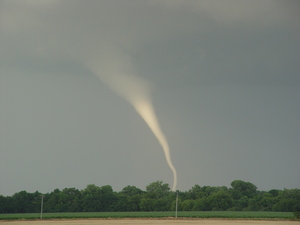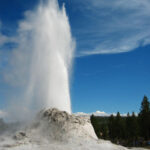On June 20, 2010, the main street of Billings, Montana was hit by one of four tornadoes that damaged businesses and tore the roof off of the Rimrock arena. Luckily, no one was killed and only minor injuries were reported, according to the Billings Gazette.
A Rare Occurrence?
Tornadoes, like the one that hit Billings, MT, on June 20, 2010, are not uncommon to Montana. While the severity might be a bit unusual given Billing’s proximity to the Rocky Mountains, Montana has a long history of tornadoes. In fact, according to The Tornado Project, Yellowstone County alone (where Billings resides) has had 18 tornadoes between 1880 and 2000 and Montana has had 356 tornadoes from 1955 to present according to the National Oceanic and Atmospheric Administration. Because Montana has the Rocky Mountains to siphon some of the storms’ energies away, thus creating a rain shadow, Montana’s tornadoes tend to be on the wimpy side ranging from F0 to F2 on the Fujita storm scale. Even so, when tornadoes do occur, they tend to be considered unusual even though Montanans may experience anywhere from two to ten in a given storm season.
The reality is that tornadoes can occur anywhere. In the late 1980s, a tornado ravaged a 10,000 ft mountain in Yellowstone Park, showing that mountains, while usually safer, are not safe from tornadoes.
What Causes Tornadoes?
Tornadoes can occur anytime but frequently occur in the spring and early summer in the western states and occur in the spring and summer months in Montana. Tornadoes often occur along a “dryline” – that is, where hot, dry air comes from the west to collide with a layer of warm, wet air in the east. Most tornadoes form from storm clouds known as “supercells,” which is an area of organized rotation. With storms close to the Rocky Mountains, most tornadoes spawned in Montana are a result of rapidly growing thunderstorms.
Tornado Damage
The strength of the tornado is measured on the Fujita, or in some cases, the Enhanced Fujita Scale. According to NOAA, 69% of all tornadoes fall under the weak category, having winds less than 110 miles per hour. These tornadoes are typically ranked F0 (EF0) and F1 (EF1) of the Fujita/Enhanced Fujita scale (the higher the number; the greater the damage). Although classified as weak, these tornadoes are still responsible for about 5% of deaths caused by tornadoes.
Strong tornadoes rank F2, F3 and F4 on the Fujita scale. These tornadoes are responsible for nearly 30% of the deaths and will have wind speeds between 110-205 mph. The most dangerous tornadoes, the F5 tornadoes, have winds in excess of 200 mph and account for nearly 70% of the deaths in tornadoes.
What to Do in a Tornado
Because tornadoes are not as common in Montana as other states, you may not know what to do when you see a funnel cloud. Here are some handy tips when dealing with tornadoes:
1. A Tornado Watch means conditions are favorable for producing a tornado. You should pay attention to the skies and keep an eye out for possible funnel clouds. You should also listen to your radio or TV for possible weather alerts including a Tornado Warning.
2. A Tornado Warning means that a funnel cloud or tornado has been sighted in your area. You need to seek cover as soon as possible inside a sturdy building, away from windows and on the ground (or lower) floor. Get under a sturdy table and cover your head and neck with your arms.
3. Do not try to get a better view of the tornado or try to “chase it.” Tornadoes are extremely unpredictable and you could lose your life.
4. Many people are injured and killed by flash floods, hailstones and lightning that accompany these storms – go to a safe place to wait out the storm.
5. Mobile homes are not safe. You need to seek shelter in a storm shelter or in the lowest floor of a sturdy building, away from windows.
6. Do not try to outrun a tornado in your car. Cars are death traps when it comes to tornadoes and can be picked up and flung great distances or mangled. Find the lowest spot you can and lie down with your hands over your head.
7. Don’t try to open windows when inside a house. Stay away from windows and go to an interior room
8. According to FEMA, you’re caught outside, lie in a ditch with your hands over your head. Watch for flash floods. Do not get under a bridge or overpass as you can be hit with flying debris.
References
Tornado Hits Billings, Destroys Businesses, Arena
NOAA Storm Database
Tornadoes: Nature’s Most Violent Storms
The Tornado Project
Tornadoes
What to do During a Tornado



